
Viewed from space, the endless blues of the Pacific ocean are the most obvious feature of Earth. Though not visible to those orbiting our planet, of equally vast proportions and fast-becoming the Pacific's most notorious feature - is the Great Garbage Patch.
This oceanic gyre, or set of gyres, covers areas in the North Pacific where surface currents and wind aggregate plastic waste of various sizes. The Great Pacific Garbage Patch spans the entire North Pacific ocean, stretching from the west coast of the United States to Japan. Scientists believe it is actually comprised of two spinning areas, one in the north-east Pacific, the other centred in the north-west. The Hawaiian island chain sits slightly below and between them. The two patches exchange floating debris in a subtropical convergence zone, where cold currents coming down from Alaska meet warm currents coming up from the equatorial Pacific.
Because the whole of the North Pacific has circular currents along its boundaries, material flushed into the sea from coasts tends to keep getting swept along and, as if in a whirlpool, it congregates towards the centre.
Log on to vessel tracking websites and you may be able to see two small ships determinedly trying their best to clean this patch up: the Danish-flagged Maersk Trader and Maersk Tender. Both might be steaming at just a knot or so, side by side, and have been on their latest plastic harvesting in the subtropical Pacific since March 2024.
The Maersk Trader and Tender are conjoined by a tow. Two plastic wings pull along a device that sweeps floating plastic into a seine net. This huge sack is known as the Retention Zone. Once this collecting device is ready to be emptied, it is hauled aboard one of the ships.
Diese Geschichte stammt aus der July 2024-Ausgabe von Yachting World.
Starten Sie Ihre 7-tägige kostenlose Testversion von Magzter GOLD, um auf Tausende kuratierte Premium-Storys sowie über 8.000 Zeitschriften und Zeitungen zuzugreifen.
Bereits Abonnent ? Anmelden
Diese Geschichte stammt aus der July 2024-Ausgabe von Yachting World.
Starten Sie Ihre 7-tägige kostenlose Testversion von Magzter GOLD, um auf Tausende kuratierte Premium-Storys sowie über 8.000 Zeitschriften und Zeitungen zuzugreifen.
Bereits Abonnent? Anmelden

5 EXPERT TIPS BOB BEGGS ON SAILING IN COLD WEATHER
As temperatures drop, Andy Rice gets tips on how to handle the cold from self-confessed Arctic weather fan and winning Clipper Round the World Race skipper Bob Beggs
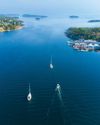
SPECIAL REPORT EXTENDED CRUISING IN THE BALTIC
Sweden offers cruisers a warm welcome for winter - Janneke Kuysters has advice on how to boost your sailing time in the region

NIKKI HENDERSON
SEARCHING FOR MORE SPEED? BEFORE TINKERING WITH TINY ADJUSTMENTS, MAKE SURE YOU'VE GOT THE BASICS RIGHT THE POWER DRIVING THE BOAT

MATTHEW SHEAHAN
WHAT WILL THE BOATS OF THE 38TH AMERICA'S CUP LOOK LIKE? THAT'S THE $20 MILLION QUESTION IF BRITAIN OR NEW ZEALAND DECIDE TO DEPART FROM THE AC75
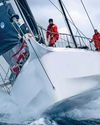
60-knot squalls hit Middle Sea Race
The 45th running of the Mediterranean offshore, the Rolex Middle Sea Race, saw a spectacularly random mix of conditions - even for a race which is famed for its variable weather patterns.
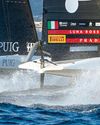
Italy win first Women's Cup
The first ever Women's America's Cup was won by Luna Rossa Prada Pirelli after a single, twoboat shoot-out final on 12 October.

'Three-peat' for ETNZ
As Defender, Emirates Team New Zealand came into this year's 37th America's Cup as clear favourites. But the Kiwi camp has far more than just the structural advantage of being the ones that wrote the Protocol for the competition, and the originators of the AC75 concept.
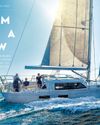
ROOM WITH A VIEW
SWEDISH DESIGNER GABRIEL HEYMAN POURED A LIFETIME OF IDEAS INTO THIS PILOT SALOON CRUISER, WHICH INCLUDES ARGUABLY THE LARGEST COCKPIT AVAILABLE AT THIS SIZE
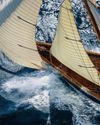
LIVING HISTORY
THE ICONIC SEASON-CLOSING REGATTA LES VOILES DE SAINT TROPEZ WAS AN IMMERSIVE HISTORY LESSON FOR CROSBIE LORIMER
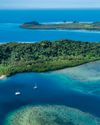
CHANGE OF PLAN
LEAVING AUSTRALIA, MARIANNE URTH NEVER PLANNED TO MAKE LANDFALL IN THE ISLANDS OF VANUATU, BUT THE EXPERIENCE WAS MAGICAL